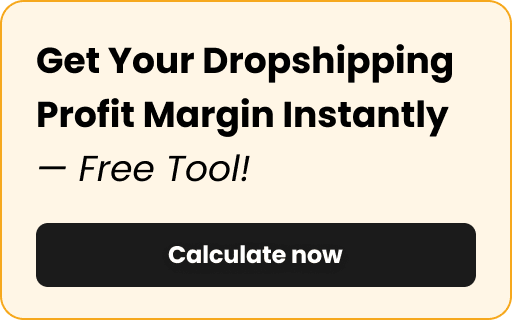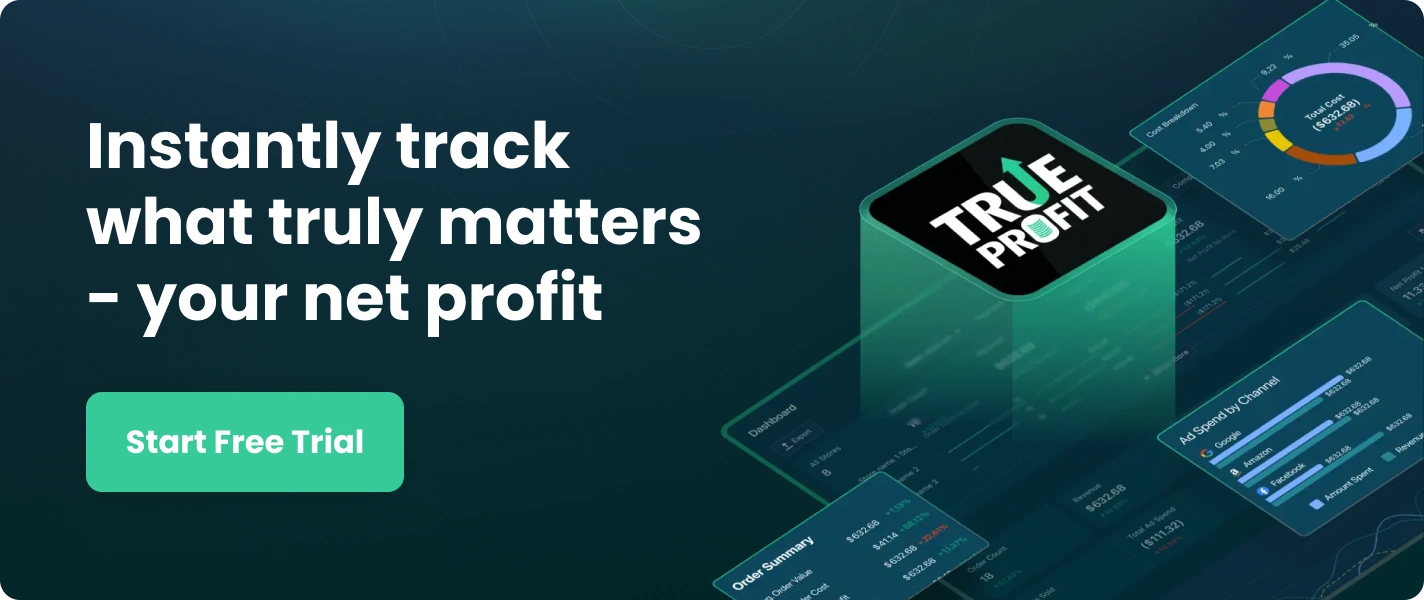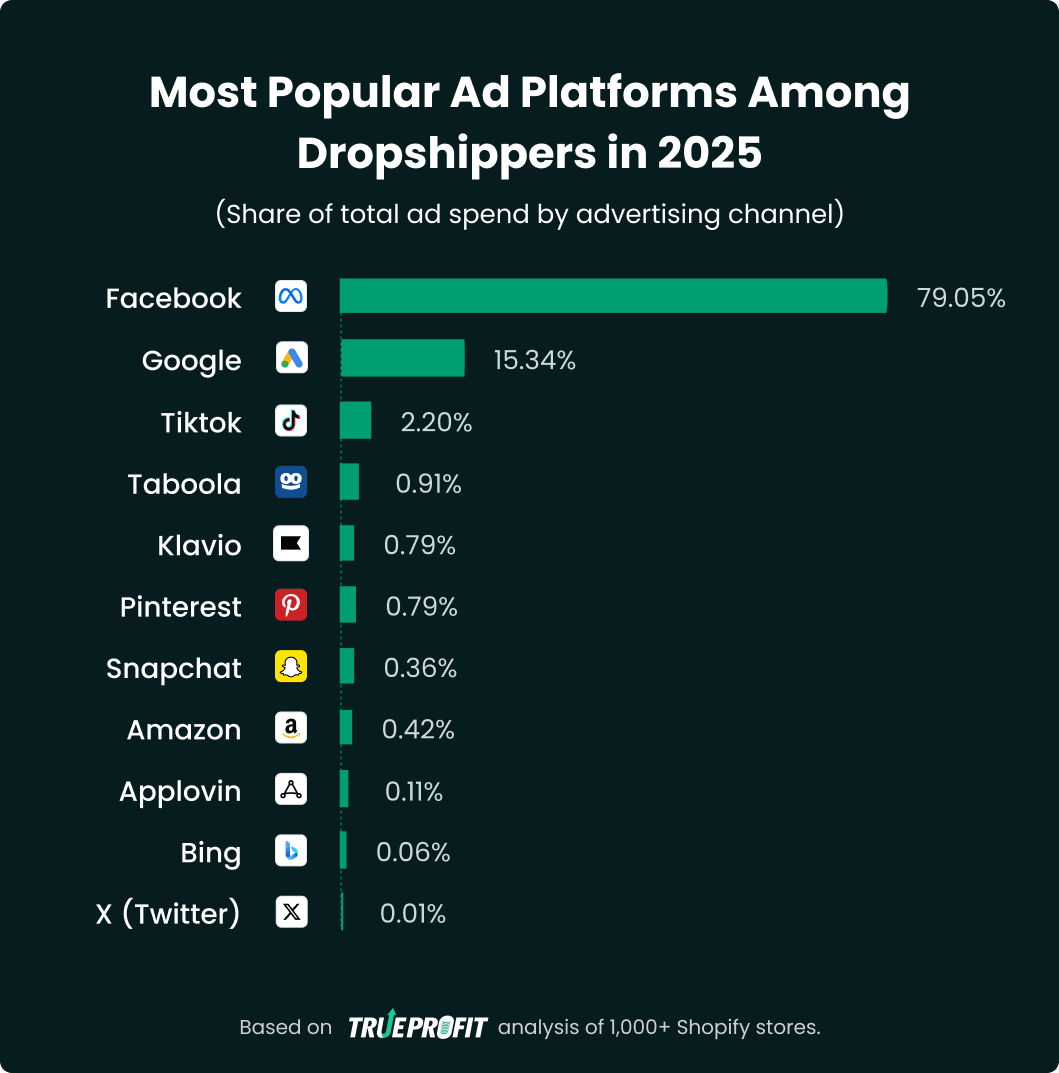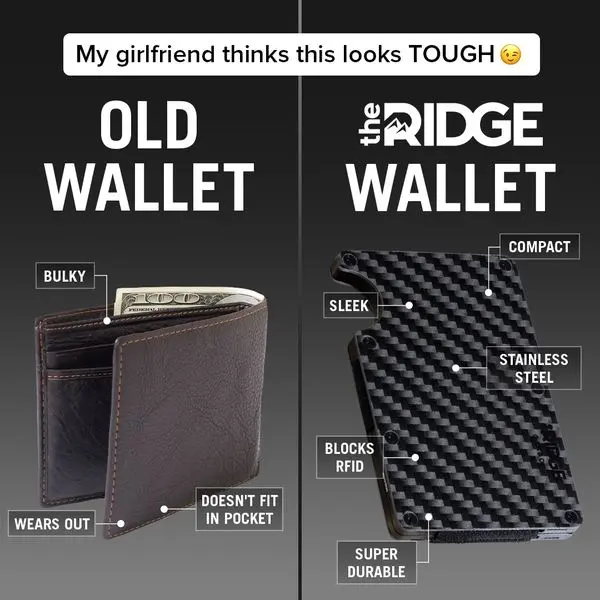Facebook Ads for Dropshipping: Best Strategies + Ad Examples

Facebook Ads remain one of the most powerful marketing channels for dropshippers in 2026, with click through rate averaging 2.5% and millions of active buyers across the platform.
This guide will break down proven Facebook ad strategies for dropshipping, key performance metrics to track, and real examples of campaigns that convert so you can build profitable ads from day one.
Is Facebook Ads Still Good for Dropshipping in 2026?
According to TrueProfit’s analysis of over 1,000 Shopify stores in 2025, about 80% of their total ad budgets were spent on Facebook — showing that Facebook remains one of the most favored ad platforms among dropshippers.
I mean, no one’s foolish enough to keep investing in a platform that doesn’t make money.
As a bonus insight, TrueProfit’s data also shows that the average CTR for Facebook ads in 2025 is 2.5%, and the average CPC is $0.60 — pretty solid numbers for e-commerce sellers.
And here are more proof from Croplink:
- Ad Effectiveness: Ads on Facebook work, with an average conversion rate of 9.21% and being the most profitable platform for 40% of brands.
- Buyer Reach: 64 million consumers shop directly on Facebook and over one billion buyers using Marketplace each month.
- Business Adoption: Facebook is the go-to ad channel with 91% of businesses using it for marketing and engagement.
All key indicators show that Facebook Ads will continue to be a profitable channel for dropshippers in 2026.
But while choosing the right platform matters, long-term success on Facebook doesn’t come from luck — it comes from data-driven strategies, smart optimization, and consistent tracking of ad profitability.
Here are 10 proven Facebook ad strategies and key performance metrics determining your ad success.
10 High-Impacting Facebook Ad Strategies for Dropshipping (+ Examples)
1. Set Up a Facebook Sale Funnel
According to NN/G, over 70% of shoppers browse multiple times before making a final decision and every purchase usually requires at least 1–3 touchpoints (ad view → product page → maybe retargeting) for most buyers. By structuring your campaigns by funnel stages, you can show the right message at the right time. That’s why the Facebook conversion funnel is important.


Here’s how you do it:
At the top of the funnel, dropshippers can attract strangers with eye-catching creatives or problem-solving content that builds curiosity rather than selling outright.
Next, you can use retargeting ads to remind those who clicked or watched your videos — highlight benefits, urgency, and real customer reviews to drive them to checkout.
Once they’ve made a purchase, it’s time to use post-purchase campaigns to turn them into repeat buyers with upsell offers or loyalty discounts. This helps maximize customer retention and ultimately increases average customer lifetime value in the long-term.
2. Create the Highest Value Buyer Profile
Not all customers bring equal value — and for dropshippers, knowing which buyer types generate the most profit helps you spend smarter on Facebook ads. Your highest-value buyers are those who not only convert but also return or spend more over time.
Start by analyzing your data: look at customer lifetime value, average order value, and purchase frequency. You better know your ideal buyer extremely well: their age, gender, location, income level, pain points, motivations. Then you craft your targeting, copy, creative and offer around that person.

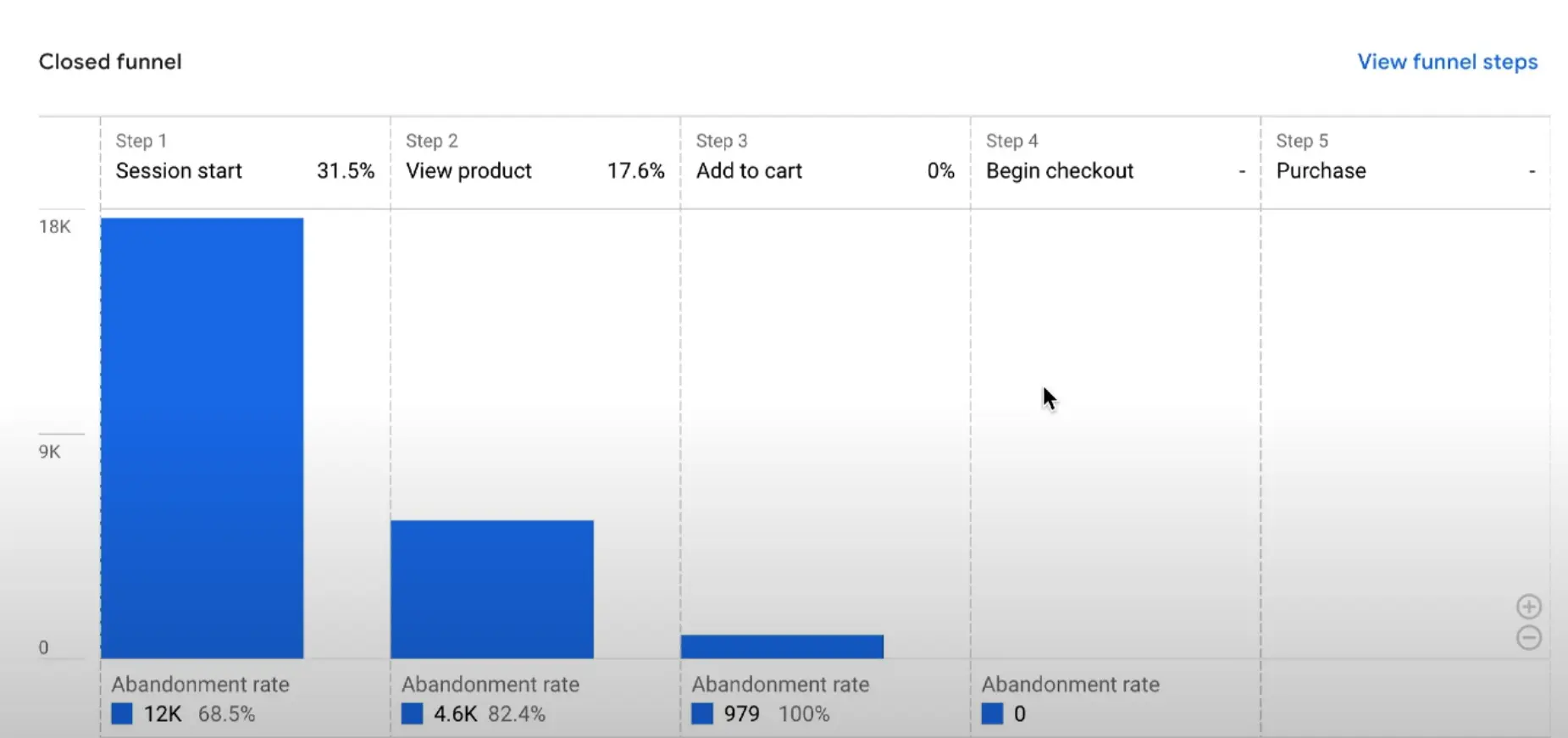
Once you know who your top spenders are, you can use Facebook’s Custom Audiences to retarget them or build Lookalike Audiences to find new users who share similar traits — like interests, locations, or spending habits.
The key is to focus your ad budget on audiences most likely to bring long-term profit, not just short-term sales. This makes every dollar you spend on Facebook work harder — increasing both your return on ad spend and overall net profit.
3. Analyze Your Competitor’s Keywords
Before spending on Facebook Ads, it’s essential to understand which products, phrases, and hooks are already winning in your niche. Start by exploring Facebook Ad Library to see active ads from top-performing dropshippers. You better pay close attention to their ad copy, headline phrases, and call-to-action words. Common winning keywords often lie on benefits such as “pain-free,” “lightweight,” “eco-friendly”, or urgency like “limited offer,” “only today”.

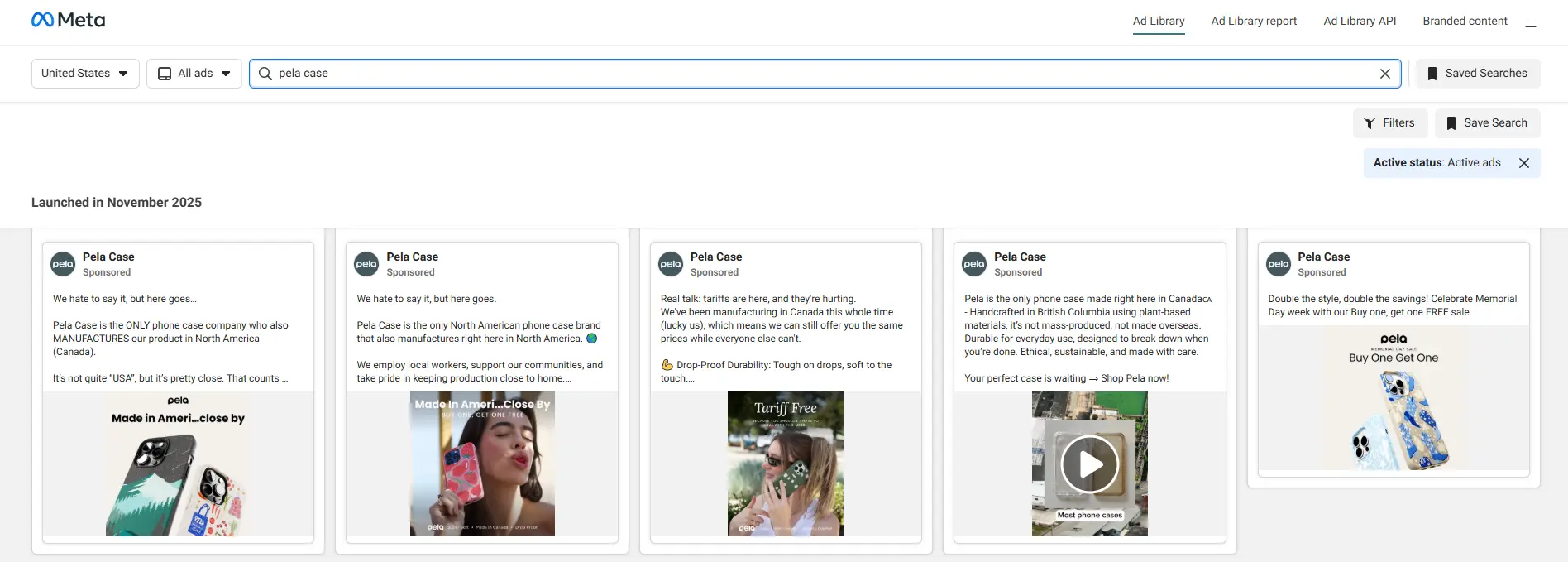
Then you use those keyword insights in your ad headline and description to better hook your audience.
4. Use Content Marketing to Warm Up Cold Lead
Cold traffic won’t buy your ad. That’s why content marketing needs come in. Blog posts, videos, social posts —they all help warm up those cold strangers and make them more open to buying later.
A short video showing how your posture corrector improves daily comfort, or a quick “how it works” demo of your portable blender, can build curiosity without feeling like a hard sell.
You can then retarget those who watched or engaged with your content using conversion-focused ads — showcasing reviews, social proof, or limited-time offers to move them closer to purchase.
This approach keeps your ad costs lower at the start and improves conversion when you hit them with a “buy” ad.
5. Run Multi Ad Formats & Ad Placements
Each ad format serves a different purpose, and together, they create a more powerful customer journey from discovery to purchase.
There’re 4 most common types of Facebook ad formats:
- Multi-product ads let you promote several products within a single ad. For example, a skincare brand could display its cleanser, toner, and moisturizer in one ad, encouraging shoppers to explore or bundle them together.

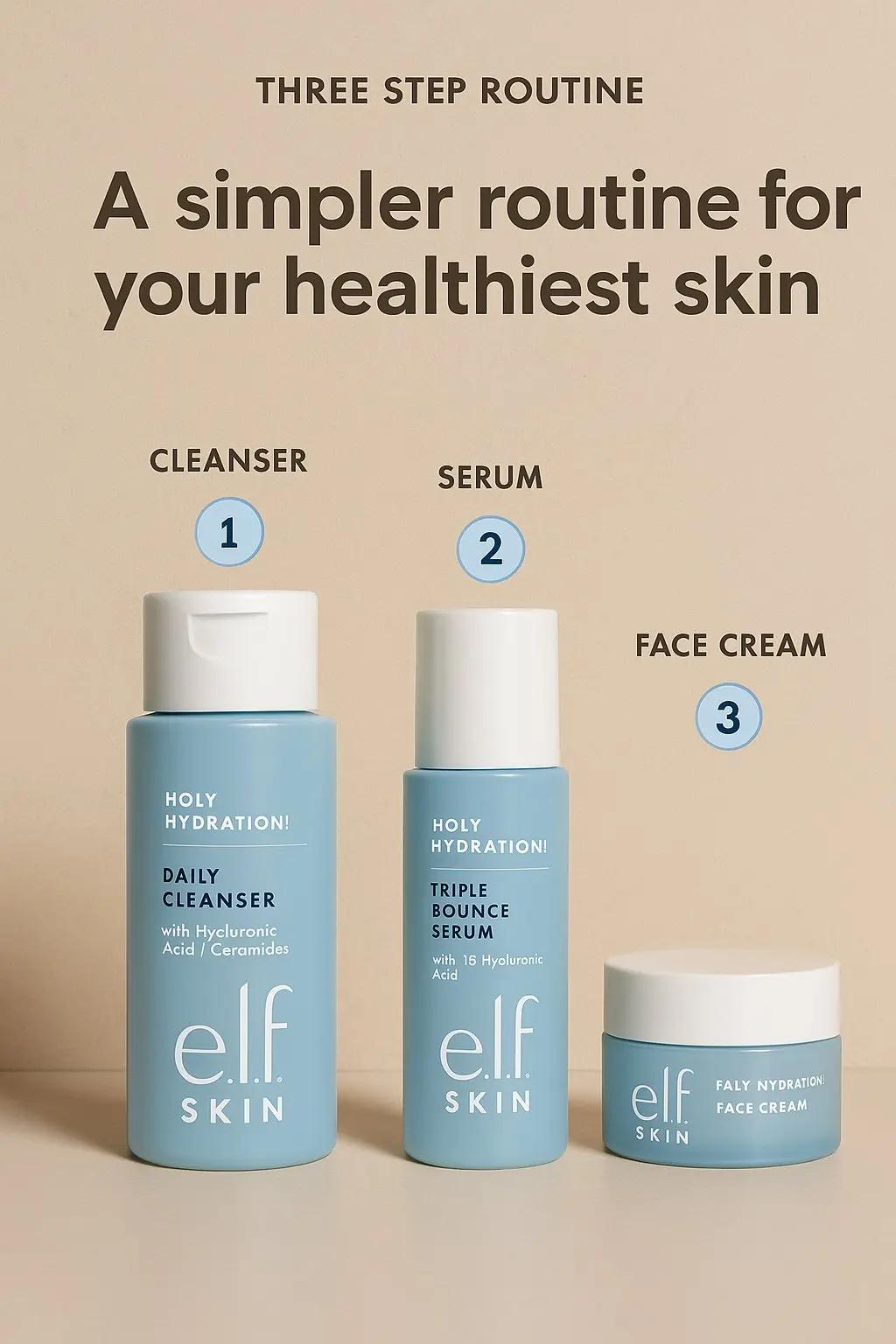
- Carousel ads allow you to display up to 10 slides to showcase product variations and benefits. For example, a fitness dropshipper might use carousel ads to highlight “before-and-after” results, different product uses, or step-by-step benefits.

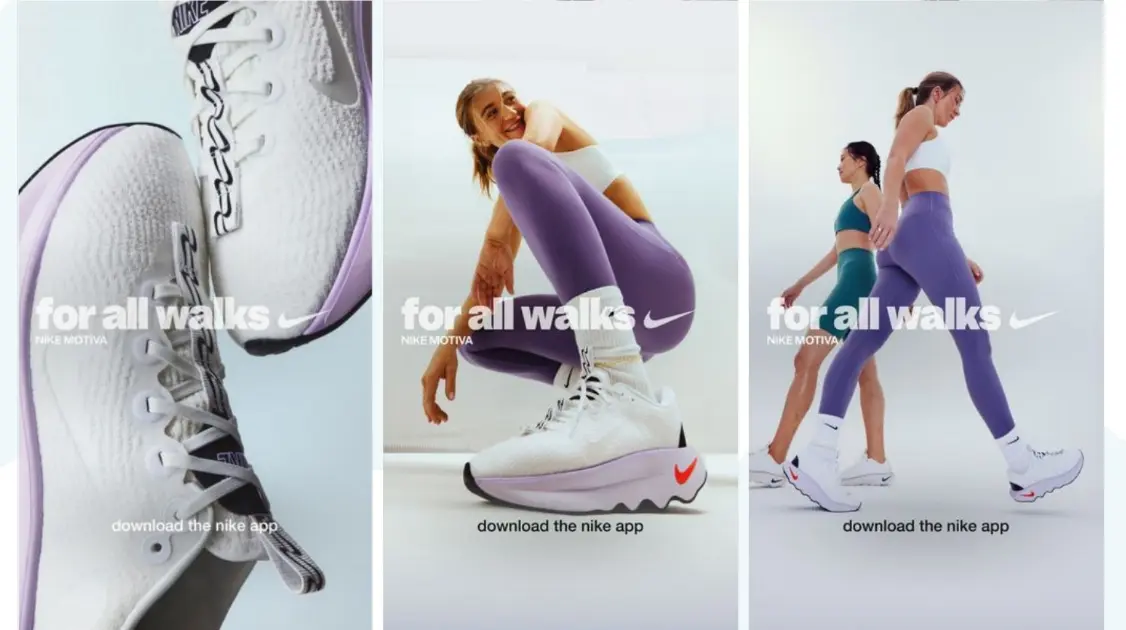
- Videos remain one of the most engaging and persuasive ad formats. Statistics from BusinessDasher shows that shoppers who watch videos are 1.81x more likely to purchase.


- Dynamic ads automatically display products people have already viewed or added to cart, making them ideal for retargeting warm audiences.
By testing these ad formats — multi-product, carousel, video, and dynamic ads — and ad placements like Facebook Feed, Instagram Feed, Stories, Reels, Audience Network helps you identify what works for your specific product and audience.
6. Design Creatives Tailored for Mobile vs. Desktop Users
Your Facebook ads shouldn’t look or feel the same on every screen.
Desktop ads are typically rectangular or square and appear in various placements such as the right column, feed, or Marketplace.


Meanwhile, mobile is a completely different experience. Users scroll fast, and the primary text takes center stage. That’s why vertical or square creatives work best — ideally 1080 x 1080px for square and 1080 x 1920px for vertical full-screen formats.


Since over 98% of Facebook users browse on mobile, optimizing creatives for each device helps you deliver a smoother experience and drive more potential clicks from every screen.
7. Use Lookalike Audiences to Broaden and Retarget
Instead of wasting ad budgets on broad audiences that take more time to convert, merchants often use Facebook Lookalike Audiences to find their new customers based on their best buyers. These audiences are built from your Custom Audience — such as past purchasers, repeat customers, or high-value leads — allowing Facebook’s algorithm to locate users with similar behaviors and interests.
Start by creating a Custom Audience of past converters, then set up a Lookalike Audience based on it. You can even create multiple tiers (1%, 3%, 5%) to test which brings the best results — smaller percentages are more precise, while larger ones help scale reach.
Pair your Lookalike targeting with retargeting campaigns for visitors who viewed products or added to cart but didn’t buy — one of proven choices for scaling profitable dropshipping campaigns more efficiently.
8. Combine Facebook Ads with Google Ads
The best thing about digital marketing is that you don’t have to stick to one channel, conversely you can totally combine multiple channels that support each other at different stages of your funnel.
Here’s how you should do it:
Step 1: Warm up your audience on Facebook. Run Facebook ads to build brand awareness and attract people who show interest in your products.

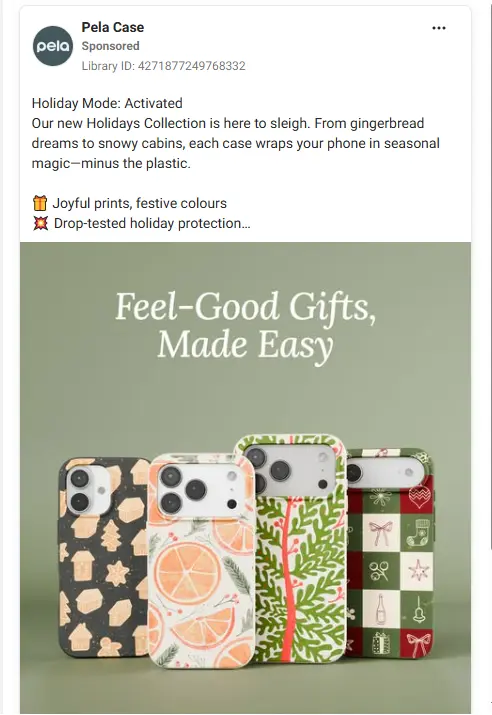
Step 2: Retarget them on Google. Use your website visitors to create Remarketing Lists for Search Ads (RLSA) in Google Ads. It means when those same visitors search for your product—or even your competitors’—you can bid higher to appear above other results.

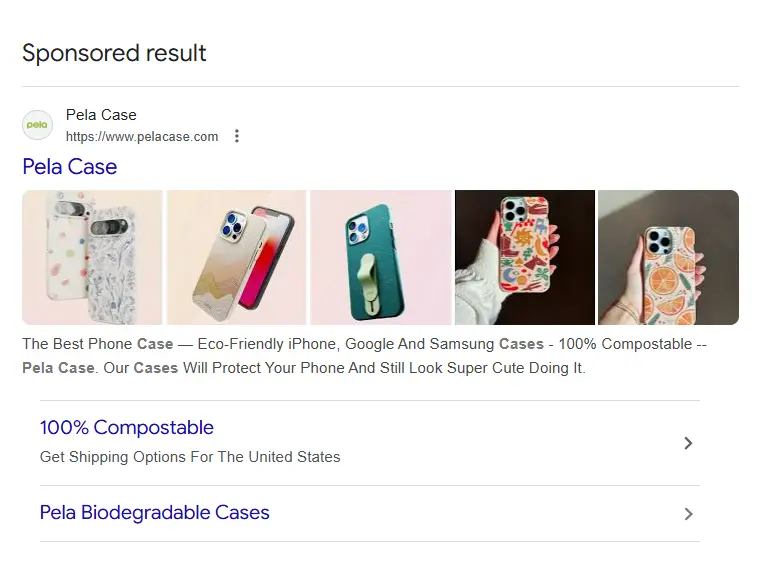
This combo does two things: You stay top-of-mind and catch potential buyers right when they’re actively searching.
9. Run a Free Giveaway Campaign
If you want clicks and engagement, give people something worth getting excited about.
Facebook giveaways are one of the easiest ways to grab attention, grow your audience, and collect leads—fast. The key is to offer something of genuine value, not just another discount code.
Take Bedsure, for example. They ran a Facebook giveaway offering human dog beds in exchange for post engagement — like, comment, share.

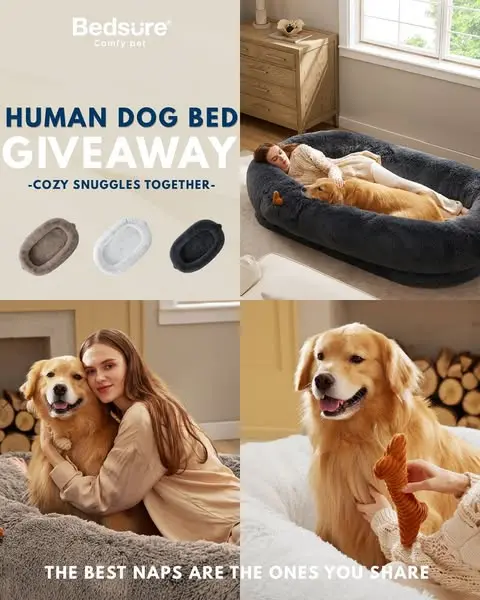
Just remember two things: 1) Your giveaway doesn’t have to push for immediate sales. Instead, the goal of giveaway could be boosting brand visibility, generating new leads, and nurturing them over time through retargeting. 2) When running giveaways for cold audiences, choose Reach as your campaign objective to maximize visibility and get your ad in front of as many potential participants as possible.
10. Run an Upsell Campaign
Once a customer has made a purchase, the next opportunity is to increase their order value with an upsell campaign. Upselling campaign works best when you’re doing good at four things:
Start with timing. It means showing upsell offers immediately after the initial purchase or within the first few days.
Relevance is the next priority. Only promote products that naturally complement the original purchase. For example, if someone buys a smartphone, an upsell could be a matching case, screen protector, or wireless earbuds.
Strategic placement also makes a difference. For dropshipping stores, this can be automated using post-purchase Facebook ads or checkout page offers to showcase complementary products.
And don’t forget to segment your audience. Target buyers based on what they purchased to personalize the upsell and increase conversion rates.
A well-executed upsell campaign helps maximize customer lifetime value and makes every Facebook ad dollar spent on acquisition more profitable.
How to Measure Facebook Ad Performance
Here are the most important metrics every dropshipper should monitor:
Impressions: The total number of times your ad is shown on Facebook or Instagram. High impressions indicate good reach but don’t necessarily mean engagement.
Click-Through Rate (CTR): The percentage of people who saw your ad and clicked on it. A higher CTR means your ad is relevant and engaging to your audience.
Cost per Mille (CPM): The average cost for 1,000 impressions. This helps you understand how much visibility you’re paying for.
Cost per Click (CPC): The average cost you pay for each click. It’s a key metric to evaluate your ad’s cost efficiency.
Conversions: The number of times users completed a desired action — such as making a purchase, signing up for a newsletter, installing your app, or any goal you’ve set.
Cost per Conversion: The average cost required to get one conversion. Lowering this number means your campaign is becoming more efficient.
Return on Ad Spend (ROAS): The total revenue generated from your ad campaign compared to what you spent. A ROAS of 3.0 means you earn $3 for every $1 spent.
Net Profit on Ad Spend: The total net profit you make from your ad campaign compared to your total ad spend.
Net Profit: The total money left after subtracting all costs — including ad spend, COGS (product cost), shipping, and transaction fees. This is the ultimate metric that tells you whether your Facebook dropshipping ads are truly profitable.
To get a sense of what good performance looks like, here are the average Facebook ads benchmarks for 2026 across all industries:
Facebook Ad Metrics (2026 Benchmark) | Average Performance |
|---|---|
Click-Through Rate (CTR) | 2.5% |
Average Ad Spend (Small Business) | $427 |
Cost per Mille (CPM) | $10 |
Cost per Click (CPC) | $1.92 |
Conversion Rate | 10.2% |
Cost per Conversion | $23.10 |
Return on Ad Spend (ROAS) | 2.5 – 4.0 |
Net Profit Margin | 10% – 20% |
Net Profit | Greater than 0 |
These benchmarks help dropshippers evaluate their ad performance and set realistic goals for optimization. If your numbers are below these averages, it’s time to test new creatives, audiences, or landing pages to boost results.
Remember, if you’re running ads solely on Facebook, the built-in Meta Ads Manager provides sufficient reporting. But if you manage ads across multiple channels — such as Google, TikTok, or Instagram — you’ll need a third-party analytics tool with advanced tracking to attribute results accurately across all channels.
How to Find The Most Profitable Facebook Ads Campaign?
To identify your most profitable Facebook ad campaign, you need to track Net Profit on Ad Spend (also known as NPOAS) — the metric that shows your true return after all costs.
Unlike ROAS, which only factors in revenue, NPOAS reveals how much profit your ads actually generate by factoring in ad spend, product costs, shipping fees, transaction fees, and more.
However, few tools on the market offer precise NPOAS tracking.
That’s why Shopify merchants choose TrueProfit — the #1 net profit analytics app that automatically calculates every expense and breaks down your true profitability by ad campaigns, by store and even per order. With TrueProfit, you can finally see the real profit and loss of your paid marketing effort, in real-time.


TrueProfit offers six key features to tracking and monitoring true profit and loss in Shopify store:
- Real-time Profit Dashboard: Keep track of the most critical financial metrics including net profit, revenue, COGS (product cost), shipping cost, ad spend, total cost, net profit on ad spend, customer lifetime value, customer acquisition cost, and more - all in one real-time dashboard.
- Multi-Channel Ad Performance Tracking: Measure true impact of every marketing channel and spot the top & low-performing ad campaigns after all costs. Seamless integration with major ad platforms like Facebook, Instagram, Google, TikTok, and more.
- Profit Per Product Tracking: Identify the most and least-profitable products by tracking net profit per item.
- PnL Performance Report Over Time: Reveal profit & loss change with other financial metrics performance over time — by week, month, or year.
- Customer Value Tracking: Spot true value of customers by comparing the return per acquisition cost.
- Mobile Profit Dashboard: Stay on top of your store's profit and costs on the go.
With accurate profit tracking and full-funnel analytics in one single app, TrueProfit helps merchants make much smarter and faster ad decisions that truly move their profit needle.
Final Thoughts
In 2026, dropshipping via Facebook Ads still holds strong potential — but it demands smarter strategy, sharper execution, and continuous optimization.
Treat Facebook Ads not as a throw-and-pray tactic, but as a key part of a defined funnel: you attract cold traffic, warm it with content or social proof, convert with a strong offer, then nurture post-purchase.
You must test creatives, audiences, placements, and track your metrics relentlessly. Budget size matters less than discipline, clarity of offer and understanding your buyer.
If you implement the strategies above — conversion funnel, high-value buyer profile, multiformat creatives, lookalikes, upsells — you’ll push your dropshipping business toward scalable results rather than one-time hacks.
Lila Le is the Marketing Manager at TrueProfit, with a deep understanding of the Shopify ecosystem and a proven track record in dropshipping. She combines hands-on selling experience with marketing expertise to help Shopify merchants scale smarter—through clear positioning, profit-first strategies, and high-converting campaigns.

